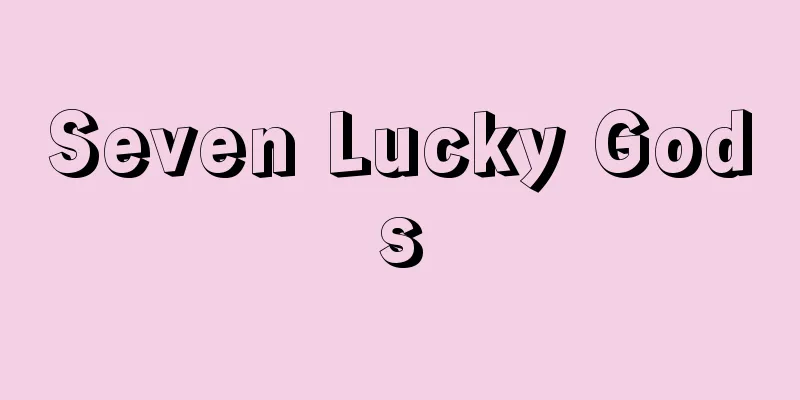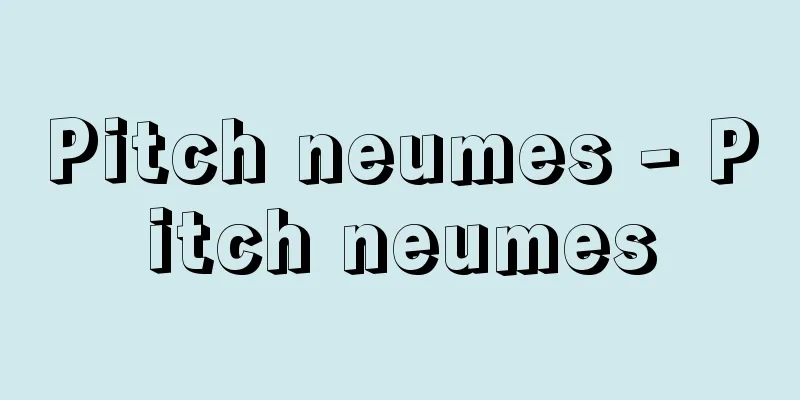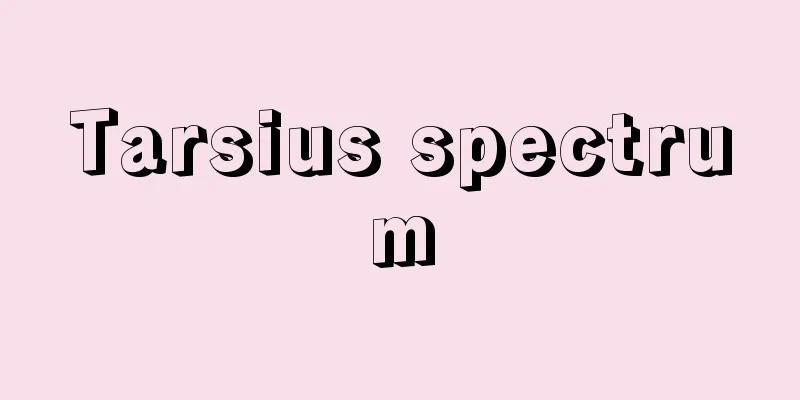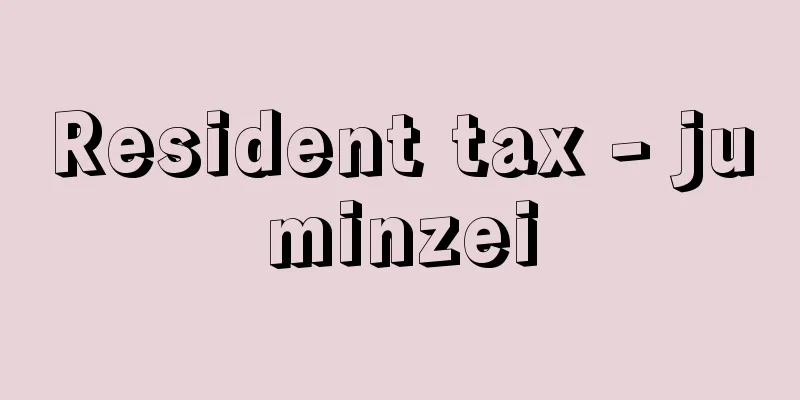Seven Lucky Gods

|
A combination of seven gods worshipped as gods of good fortune. They are Daikokuten, Ebisu (Ebisu, Hiruko), Bishamonten, Benzaiten (Benten), Hotei, Fukurokuju, and Jurojin, but Jurojin is sometimes excluded as he is the same person but with a different name, and Kisshoten is added. Daikokuten is an Indian god (Makakara) and an incarnation (also called a follower) of Daizaiten, while Bishamonten is one of the Four Heavenly Kings and the god who protects the north. Both are considered to be the guardian deities of Buddhism and gods of good fortune and wealth. Benzaiten is also an Indian deity in the heavenly realm, in charge of music, wisdom, and good fortune. Ebisu is a "Yorigami" (a god who visits the sea) that brings bounty from the sea and seems to have its roots in folk beliefs about the seaside, but when Daikokuten was syncretized with Okuninushi no Mikoto, perhaps because of the mutual connection between "Daikoku" and "Great Country," he came to be compared to Kotoshironushi no Mikoto. Both gods have been worshipped individually as gods of good fortune since the Heian period. However, Hotei (a Zen monk from the Later Liang Dynasty, Kaishi), Fukurokuju, and Jurojin are Chinese gods of good fortune and seem to have been introduced to Japan after the introduction of Zen Buddhism as a popular subject for ink paintings, and did not take root as independent gods of good fortune beliefs. The Seven Lucky Gods were created by combining these various gods of fortune and assigning them the sacred number "seven." The Seven Lucky Gods were already in existence in the early Muromachi period, and there are records of an elegant procession of the Seven Lucky Gods held in Kyoto in 1420 (Oei 27), and of a thief disguised as the Seven Lucky Gods appearing during the Bunmei period (1469-87), who was welcomed as a visitor to the gods of fortune. In any case, the Seven Lucky Gods were popular among medieval merchant society as gods of fortune and continued to be worshiped in the early modern period and beyond. As symbols of good fortune, the Seven Lucky Gods were popular subjects for paintings and sculptures, and statues of the gods were displayed in homes and worshiped, or religious customs such as pilgrimages to the Seven Lucky Gods and the first dream of the year were widely practiced, and the Seven Lucky Gods Dance was also created and passed down to the present day. [Toshimi Takeuchi] This is a nishiki-e (colored woodblock print) depicting seven gods, believed to bring good fortune, assembling the character for "longevity," which represents auspiciousness. In the upper left is Benzaiten, to the lower right is Fukurokuju, from the top center are Bishamonten, Jurojin, and Hotei, and on the right are Daikokuten (front) and Ebisu, carrying part of the character for "sashininai." Utagawa Kunisada (3rd Toyokuni), "Seven Lucky Gods Assembling a Longevity Pillar," triptych, 1853 (Kaei 6), owned by the National Diet Library . Seven Lucky Gods Source: Shogakukan Encyclopedia Nipponica About Encyclopedia Nipponica Information | Legend |
|
福徳の神として信仰される7神の組合せ。大黒天、恵比須(えびす)(夷、蛭子)、毘沙門天(びしゃもんてん)、弁才天(べんざいてん)(弁天)、布袋(ほてい)、福禄寿(ふくろくじゅ)、寿老人(じゅろうじん)をいうが、寿老人は、福禄寿と同体異名として除き、吉祥天(きっしょうてん)を加えることもある。大黒天はインドの神(摩訶迦羅(まかから))で大自在天の化身(眷属(けんぞく)ともいう)、毘沙門天は四天王の一つで北方守護の神、ともに仏法の守護神で福財招福の神ともされた。弁才天も同じくインドの天部の神で音曲、知恵、福財をつかさどる。恵比須神は海の幸をもたらす「寄神(よりがみ)」で海辺の民間信仰に根ざすものらしいが、「大黒=大国」の相通(そうつう)からか大黒天が大国主命(おおくにぬしのみこと)に習合されると、事代主命(ことしろぬしのみこと)に比当されるようになった。ともに平安期以来個別に福神として信仰を集めてきた神々である。しかし布袋(後梁(こうりょう)の禅僧契此(かいし))、福禄寿、寿老人は中国の福徳神で、禅宗渡来後水墨画の好画題として移入されたものらしく、福神信仰としては独自に定着しなかった。これら雑多な福徳の神を「七」の聖数にあてて組み合わせたのが七福神だが、すでに室町初期にはできあがっていて、1420年(応永27)に七福神の風流行列が京都で行われたり、文明(ぶんめい)年間(1469~87)には七福神を装った盗賊が出没し、これを福神の来訪としてむしろ歓待したという記録などが残っている。ともかく中世商人社会で福徳施与の神として流行的に信仰され、近世以後にも及んだ。七福神は瑞祥(ずいしょう)の象徴として絵画・彫刻の好題材となり、またその影像を家に飾って拝礼し、あるいは七福神詣(もう)でや初夢の宝船などの信仰習俗を広く生じ、一方、七福神舞などの芸能もできて現在まで伝わっている。 [竹内利美] 幸福を招くとされる7体の神が、めでたさを表す「寿(壽)」の文字を組み立てる様を描いた錦絵。左上が弁才天、その右下が福禄寿、中央上から毘沙門天、寿老人、布袋、右は「さしにない」で文字の一部を運ぶ大黒天(前)と恵比須。歌川国貞(3世豊国)画『七福神壽柱建之図』 三枚続 1853年(嘉永6)国立国会図書館所蔵"> 七福神 出典 小学館 日本大百科全書(ニッポニカ)日本大百科全書(ニッポニカ)について 情報 | 凡例 |
<<: Seven-tenths deposit - Shichibutsu Mikin
>>: The Seven Doctors' Petition Incident
Recommend
Osafune faction
A school of swordsmiths who lived in Osafune, Bize...
Alouattinae
…the name refers to the New World monkeys of the ...
Orontes Dynasty - Orontes Dynasty
…Uartu (Ararat in the Old Testament), closely rel...
Ethnic sports
...therefore, they are distinct from so-called in...
schisma
…A word translated as “schism” or “schism.” Origi...
Kirino
Philippine politician. Leader of the Liberalist Pa...
Tongue coat - Zettai (English spelling)
What is the disease? White, tan, or black spots o...
Accademia del Disegno (English spelling)
…(4) Providing opportunities for member painters ...
Cyrtanthus o'brienii (English spelling) Cyrtanthusobrienii
…[Tora Saburo Kawabata]. … *Some of the terminolo...
Mr. Cook - Cook
The first Vietnamese local lord to gain independen...
Marceau, Félicien
Born: September 16, 1913, Cortanvert [Died] March ...
Late bloomer
〘 noun 〙① To be born late. Also, to grow up later ...
Okinaga Tomb Group
…An ancient clan based in Omi Province, Sakata Co...
Harut (English spelling)
…For example, Gabriel, also called the Holy Spiri...
Eutrophication - Eutrophication
Generally, this refers to the phenomenon in which...


![Shabadah [state] - Shabadah](/upload/images/67cbcef960e59.webp)






